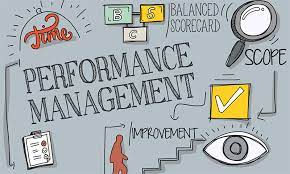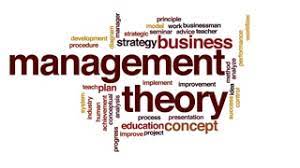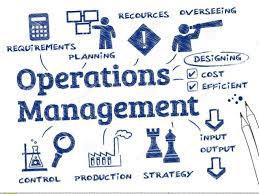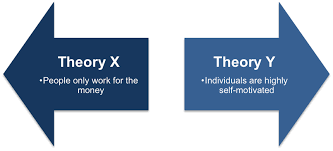Want help to write your Essay or Assignments? Click here
Management, Innovation and Organisation Performance
Introduction
Innovation is a process that involves bringing of new products in a more modern way to impress the customers and capture the market accordingly. The people who benefit from this process tend to benefit a lot and it is in such a situation that design thinking is embraced by customers. Innovation in an organisation will tend to focus on the needs of the existing and new customers in place as well as encourage amendmends of the organisation structures.
Analysis of innovation process
Building of change
In designing of organisations that are bound to change, managing of talents is embraced accordingly. Poor fit for any organisation gives the job description that will be bound to update from time to time. In most cases, an organisation that is geared to make more innovations will employ individuals who are quick learners and interested in matters of change. These individuals will work to ensure that the organisation innovation activities are attained accordingly due to their interest in acquiring new changes in their working environments (Ernst, Chrobot-Mason, 2011).
Paying their workers well will make them participate in the change process that will bring innovations in the organisation and make it more competitive in the market (Day, 2006). Also, organisations that advocates for a work environment with the allocation of best task to an individual will facilitate change and innovation to take place in their premises effectively. Allocation of tasks in accordance with individual capability is a better approach to acquiring innovations in the market accordingly (Ernst and Chrobot-Mason, 2011).
The right skills and knowledge ought to be employed for use under operations of the best talent to facilitate innovations to take place accordingly. Rewarding workers for their good job that they have done makes them be more creative towards advocating for change in their workplaces (Edmondson, 2011). The performance will be improved and change, innovation in the company will be very effected in such situations. Any bad behaviour from the employees that could have interfered with the change process will be terminated immediately; since, they are not ready and willing to temper with their jobs that give them means of survival (Hoehl & Parboteeah, 2006).
Want help to write your Essay or Assignments? Click here
The organisation structure of a company that wants to be more innovative must be checked and rectified where possible to avoid any interference in the innovation process. The structure of the organisation ought to be close to the market and define all the competitive activities that are taking place in conjunction with their innovation activities (Worley & Lawler, 2006). The organisational structure must connect its employees with the outside world to ensure that they learn more innovative methods to be used in the company.
The employees ought to be connected with the external environment for a smoother working and encourage more innovations to take place for the benefit of the organisation (Nonaka, 2007). Any organisational structure that is ready and willing to connect its employees to the outside world must bring all the critical information’s about trends taking place, encourage opportunities and issues of concern accordingly to their workers.
They ought to ensure that their workers don’t get tired with their roles that they are doing and also make it possible for them to connect with regulators across the globe (Andreeva & Kianto, 2011). Once they succed in connecting their employees with the external market, they will acquire more customers and make more progress under a well-planned innovations (Ciabuschi, Forsgren & Martín, 2011).
Want help to write your Essay or Assignments? Click here
Leaders and information
Information as well as decision process has to be well sought to ensure that all activities are well conducted. All the information given has to be transparent to ensure that activities transacted are transparent as well to the benefit of the company. Its profits govern business units that it has incurred or any loss experienced over a given time. Shared leadership is advantageous, implying that there is the best distribution of hierarchical duties, and they can be done more effectively.
The organisation will tend to respond to all information given whenever; there is shared knowledge that comes as a result of shared leadership in the organisation. Leaders in an organisation are attributed with the role of getting everyone moving in a new and a better direction that will be to the benefit of all (Corniani, 2012). Leaders also have to share the knowledge that they have for the benefit of the organisation and get their workers more informed on how they should handle their customers.
The building of talents in an organisation will be facilitated under a reputable leadership that is also shared among many people (Giedraityte & Raipa, 2012). Leaders, will be able to nurture their skills and each one’s talent will be improved. Improving of leadership talents guarantees better innovations in the organisation because; they are focused on making their functionalities better. Leadership talents include; making good decisions under all circumstances to make sure that all persons benefit from the decisions made.
Want help to write your Essay or Assignments? Click here
The views of the workers should be sought under innovations process management as a way of making them feel recognised and appreciated for who they are and for what they do. Shared leadership also calls for shared ideas of the company and ways of making innovations is of greater benefit to the organisation. Leaders working together with all the stakeholders of the organisation make a good decision related to their customers and how they can better their services and products.
Understanding both the internal capabilities and external environment is very useful under shared leaderships since; it helps in matters of corporate change (Hennala, Parjanen, & Uotila, 2011). Change is what contributes to organisations becoming more innovative and productive in its operations and will work better under shared leadership. Leaders who are focused on getting to higher heights will advocate for continuous change in their operations as a way of becoming more innovative and matching the customer’s needs (Kong, 2010).
The customer will tend to be associated with a business that are more innovate and focused on bettering their service. Innovations that come as a result of continuous change mean that customers will get impressed with them and want to buy their product and services. It is clear to state that services and products from the innovative organisation will be liked by many and their products will be improved accordingly (Schuurman, De Marez & Ballon, 2013).
Want help to write your Essay or Assignments? Click here
Aligning operations with the market
Most of the companies are pulling their organisational strategy to align it with the market for the sake of responding to the competitive pressure and become more innovative to get new customers. Teaming makes an individual be more innovative; since, they can share knowledge and help one another with different ideas that they know and in whatever they do rather than when one is working alone.
Their knowledge becomes broader and more applicable for use in the innovation process which is very useful in the company progress. Good interpersonal skills are also bound to be developed and this is also good in encouraging better networking in the innovation process. There are serious challenges that are evolving from teamwork and if not well managed can cause a lot of chaos and disorientate functionality of the group.
The embracing of several projects management helps employees in an organisation to learn how to carry several activities assigned to them. Networking comes as a result of better teaming in organisations members and for the stable teams that have learned to work together end up achieving their ultimate goal accordingly.
Want help to write your Essay or Assignments? Click here
Knowledge creation
Knowledge creation is another innovation theory that had been employed for use to ensure that the best strategies are entertained to attain the required aim of the company. Making the personal knowledge available to others was a central activity that was employed for use in making sure that the best is attained in the innovation process. Knowledge availability takes place at all times in the company, and it means that knowledge creation is as much as ideal as it is about ideas.
There was the use of tacit to tacit knowledge, which is very personal and hard to personalise as well as difficult to communicate to others (Ernst, Chrobot-Mason, 2011). There is a limitation of knowledge creation that takes place when socialisation is in the process and this ouht to e limited very much. Use of knowledge model ensures that managers challenge their employees to take working seriously for the sake of making good and reputable innovations. Creation of actual model is a process in knowledge that can be used to guarantee good working and better results of innovation.
Efforts of the group work
The group identified four practices that enable boundary spanning of leadership, buffering, mobilising others and transforming as well as the weaving of others as strategies of achieving its desired goal. The group ensured that interrelated strategies were included in the team working to attain the managing innovation process working. Various efforts were laid aside to attain the desired working of the group (Akhavan, Reza Zahedi & Hosein Hosein, 2014). Also, efforts were laid aside for the members to feel protected in the group to increase collaborations between boundaries.
Want help to write your Essay or Assignments? Click here
The group work worked to have efforts in shared identity where all members could feel as part and parcel of the group. Having a typical objective was an exertion that the group needed to be encouraged in ensuring that they accomplish the achievement. The team worked to ensure that they had interdependence whereby; all the team members were active, and none of them was dormant.
Teamwork should always encourage personal interaction where people can share different ideas and views required in attaining their goal set aside. The group had endeavours to guarantee that there was a common impact among its individuals, and working was better and smoother. All the activities that are needed were listed down, and a grant chart of all activities that are bound to take place was included.
There were various efforts that had to be employed for use in making the team function as required to attain the set goal. The group had high efforts of advocating for the right person to lead the team in the desired direction (Akhavan & Zahedi, 2014). The act of choosing the right leader proved to be an effective one; since, he made those capable of any bad act to be accountable for their evil actions.
The group was saved from the danger that could have taken over and disorientate its functioning. The group had efforts of ensuring that the team leader attained more training session to improve his leadership skills and learn how to manage the group work to achieve its desired goals. Having the right team leaders was an effort from the team proving any person who know what is expected of his team members, will guide them in the right manner.
Want help to write your Essay or Assignments? Click here
Lesson about team working
Novel insight can be generated from knowledge creation, and where there is a limitation of social capital, teamwork is bound to face a lot of challenges. There are many knowledge boundaries that interfere with knowledge sharing in a team and have to be avoided at any cost. Generation of the idea in teamwork can interfere with pressure from a very powerful leader. Any teamwork requires a lot of trusts to encourage knowledge sharing among each person in the group (Jafari, Rezaeenour, Mohammad & Hooshmandi, 2011).
It was prudent to learn that any successful teamwork does not require confrontation to one another, rather it requires an understanding of one another and listening to each other’s views. There is need of integrating which involves the synthesizing to create new possibilities of brainstorming where one can reason on their own. All the conflicts of the group and its failure have to be checked and worked upon accordingly to avoid any conflict that might disorganise the teamwork (Patton, 2007).
The team is required to think and understand different methods of reacting on the organisational roles that will contribute to their achievement in the innovation process. There was a need to capture, and access softer lessons for the team members to make learning smoother and facilitation of innovation process as reguired. Every one of the distinctions in a group must be settled in ensuring that working is better and more viable.
Want help to write your Essay or Assignments? Click here
During group work, one could easily learn that choosing the right members to work with was the only way out to ensure that innovation management process was facilitated. Each of the group members has to be allocated responsibilities for them to know what is required and do it with the aim to attain the right goal. Team working will work better under good and reputable allocations of duties where each person knows what is expected of him and does it accordingly. Innovation processes are well managed by a team working where duties are well allocated to each and every group member on his capability.
One could learn that there existed different knowledge in different individuals and embracing it could help facilitate a smooth working environment. Knowledge generation is very important in any team work, and this helps the team to think on management innovation matters of the organisation. Anyone in the team will learn that working under one goal is very crucial because; this will help all members to understand the aim of attaining an innovation.
One could learn that sacrifice was very prudent where each and every member was required to sacrifice all his personal views that could be of high help to the group towards achieving its goal (Strohmaier & Lindstaedt, 2007). Through doing this, the team working could be a more effective activity and managing innovation processes could be made better.
Want help to write your Essay or Assignments? Click here
Another lesson learnt from the teamwork was that commitment to a team is very crucial in achieving its success which is the ultimate goal. Any member who proves not to be committed to achieving success in managing innovation process, will be a great stumbling block to the team. Commitment encourages any team member to be devoted to attaining the set goal as well as make contributions that will help the team move ahead in its operations (Yun, Shin, Kim, & Lee, 2011).
From the new organisational forms that supported knowledge work in the group, one could learn that knowledge work in innovation matters is supported by different forms of organisation in existence. All the knowledge workers who manage innovation process were very distinctive and forms of control as well as the required rewards.
The knowledge work is very useful in managing innovation process; hence, rewards are necessary to be given to the leaders for developing useful competencies required for use in the future. Whenever organisation grow in large size, it becomes hard to sustain adhocracies and also hard to manage the innovation process taking place within their premises.
Conclusion
This paper gives an explanation of the analysis of innovation processes and how they were experienced under different activities. All the group efforts that were evident are also elaborated as well as the lessons learnt about teamwork.
Appendix
(Group leaders) – He was determined in achieving a specific leadership, goal that was managing the innovation process of the team. The group leader was entitled to plan and control all the activities that were required by the team in making sure that all its activities towards managing the innovation process were attained accordingly.
Evans (group organiser) – Evans was entitled to the role of organising the group meetings and time as well as venues where they could be taking place. He was additionally the one to start another task for the gathering to handle and also guaranteeing that every one of the ventures met the required due date. Evans was in charge of making sure that every group member knew his role and played it effectively.
Mary (specialist) – Mary was in charge of ensuring that the product of the project was done in a more professional manner as required.
Want help to write your Essay or Assignments? Click here
Joseph (Peace Keeper) – Joseph was entitled to the role of keeping peace and making sure that all activities were taking place as required. Joseph ensured that once a conflict occurred, it was solved with an immediate effect to avoid disorientating the functionality of the group.
John (Editor) – All the work of the group members was edited by John and he ensured that there was no repetition that could make working slow and adamant. Everyone’s writing was made sufficient and in a more professional way under the guidance of John
Other members – The rest of the group members were entitled with the task of participating in the project, communicating, and submitting their assigned work upon deadlines. Group members are entitled with the role of ensuring that they do their duties as required to avoid failure of the groups.
References
Akhavan, P. & Zahedi, M.R. 2014, “Critical Success Factors in Knowledge Management Among Project-Based Organizations: A Multi-Case Analysis”, IUP Journal of Knowledge Management, vol. 12, no. 1, pp. 20-38.
Akhavan, P., Reza Zahedi, M. & Hosein Hosein, S. 2014, “A conceptual framework to address barriers to knowledge management in project-based organizations”, Education, Business and Society: Contemporary Middle Eastern Issues, vol. 7, no. 2, pp. 98.
Andreeva, T. & Kianto, A. 2011, “Knowledge processes, knowledge-intensity and innovation: a moderated mediation analysis“, Journal of Knowledge Management, vol. 15, no. 6, pp. 1016-1034.
Ciabuschi, F., Forsgren, M. & Martín, O.M. 2011, “Rationality vs ignorance: The role of MNE headquarters in subsidiaries’ innovation processes”, Journal of International Business Studies, vol. 42, no. 7, pp. 958-970.
Corniani, M. 2012, “Innovation, Imitation and Competitive Value Analysis”, Symphonya, , no. 2, pp. 37-52.
Day, S. G. 2006. Aligning the Organization with the Market. MITSloan Management Review. VOL .48 NO.1
Edmondson, A. (2011). How to master the new art of teaming. Teamwork On the Fly. ARTWORK Andy Gilmore, Hemicube digital drawing
Ernst, C. and Chrobot-Mason, C. (2011). Flat world, hard boundaries: How to lead across them MITSloan Management Review.
Ernst, C., Chrobot-Mason, D. 2011. Flat World, Hard Boundaries-How To Lead Across Them. MITSloan Management Review.
Giedraityte, V. & Raipa, A. 2012, “Risk Management in the Public Sector Innovation Processes”, Viesoji Politika ir Administravimas, vol. 11, no. 4.
Hennala, L., Parjanen, S. & Uotila, T. 2011, “Challenges of multi-actor involvement in the public sector front-end innovation processes”, European Journal of Innovation Management, vol. 14, no. 3, pp. 364-387.
Hoehl, M., & Parboteeah, P. 2006.Autonomy and Teamwork in Innovative Project. Human Resource Management, Vol. 45, No. 1, Pp. 67–79
Jafari, M., Rezaeenour, J., Mohammad, M.M. & Hooshmandi, A. 2011, “Development and evaluation of a knowledge risk management model for project-based organizations”, Management Decision, vol. 49, no. 3, pp. 309-329.
Kong, E. 2010, “Innovation processes in social enterprises: an IC perspective”, Journal of Intellectual Capital, vol. 11, no. 2, pp. 158-178.
Kosala, M. 2015, “Innovation Processes as a Stimulant of Internationalisation Process of Firms”, Entrepreneurial Business and Economics Review, vol. 3, no. 2, pp. 65-84.
Nonaka, I. 2007.The Knowledge-Creating Company. Harvard Business Review
Patton, J.R. 2007, “Metrics for Knowledge-Based Project Organizations”, S.A.M.Advanced Management Journal, vol. 72, no. 1, pp. 33-43,2.
Schuurman, D., De Marez, L. & Ballon, P. 2013, “Open Innovation Processes in Living Lab Innovation Systems: Insights from the LeYLab”, Technology Innovation Management Review, vol. 3, no. 11, pp. 28-36.
Strohmaier, M. & Lindstaedt, S. 2007, “Rapid knowledge work visualization for organizations”, Journal of Knowledge Management, vol. 11, no. 4, pp. 97-111.
Worley, C., & Lawler, E. 2006. Designing Organizations That Are Built to Change. Mit Sloan Management Review
Yun, G., Shin, D., Kim, H. & Lee, S. 2011, “Knowledge-mapping model for construction project organizations”, Journal of Knowledge Management, vol. 15, no. 3, pp. 528-548.
Want help to write your Essay or Assignments? Click here









